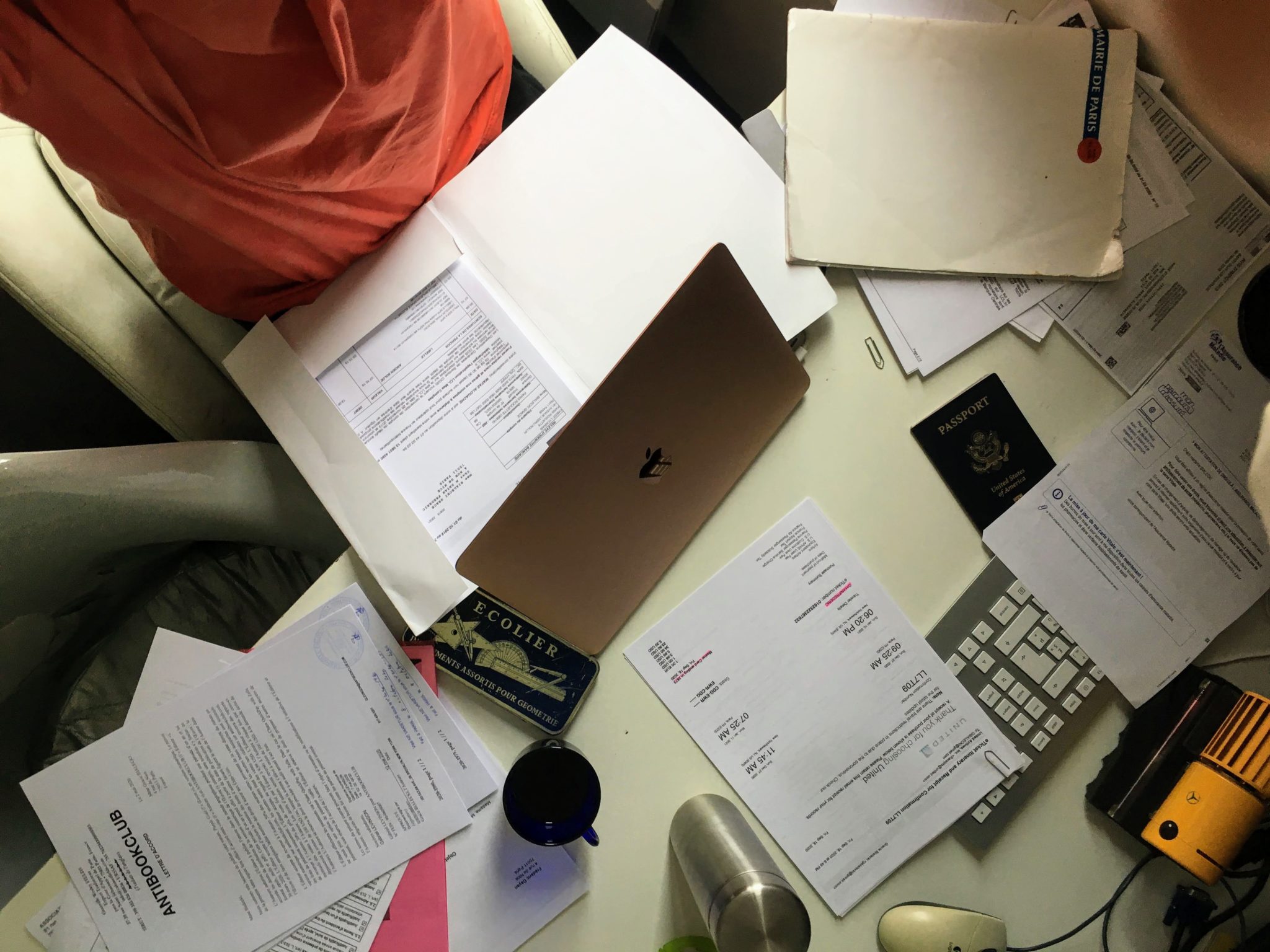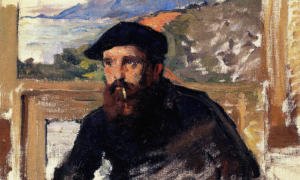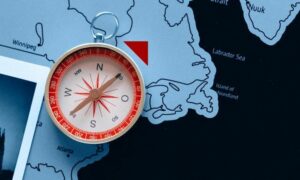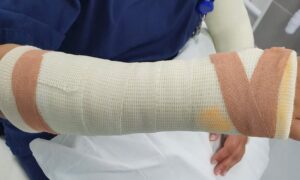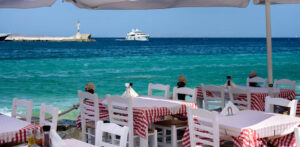(Editor’s note: This post about getting the Vie Privée et Familiale visa originally appeared on The American in Paris website. It’s reposted here with permission.)
I’ll never forget the interview for my first long-term stay visitor visa. It was December 2017, and even though I’d quit my desk job and was preparing for the move, the visa was the first real step — it would give me the legal approval to embark on my Paris dreams.
The French Embassy in New York City is just off Central Park East on a block of regal brownstones. I biked there from Brooklyn and switched into low heels and a blazer on the sidewalk: if I was over-dressed at least I would match the buildings.
The last question the woman asked during my interview was if I’d return to the United States at the end of the year. “If I don’t meet a Frenchman,” flashed through my mind. But I was being quizzed and this was the final question, so I nodded politely and kept my hypothetical romances to myself.
My Frenchman, Frédéric, appeared four months into my first visa, and we were PACSed (PACS stands for pacte civil de solidarité and is judicially one step below marriage in France) a year-and-a-half later. With my third visitor visa expiring in February 2021, applying for a Vie Privée et Familiale (otherwise known as VPF) visa was the next step in my immigration journey.
A bit of background
The differences between the two visas are tied to the rights they give you: a VPF visa allows you to work, to receive a Carte Vitale, and to leave the country for one to four years (depending on the length of stay you’re granted). The long-term stay visitor visa allows you to spend a year in the country, and … that’s about it. It’s simple when you think about the names — the VPF visa proves you have a (private or familial) tie with the country while the visitor visa means, well, you’re a visitor.
Since Fred and I are PACSed, please keep in mind I’m writing from that perspective. (This visa is also available to married couples with slightly different requirements, which I’ll include where possible.) Since I knew getting PACSed allowed me to apply for this visa, when I was starting that process in June 2019, I was also taking steps for my future VPF visa application. This means I’d spent nineteen months getting ready.
Preparation : A year out
CHECK THE VISA REQUIREMENTS
In order to apply for a VPF visa, you must be married or PACSed. If the former, you need to have proof of your marriage, as well as six months of residence if you didn’t arrive on a long-stay visitor visa. If you did arrive on a visitor visa, there’s no waiting period. For those who are PACSed, you have to, as you do with so many things in France, prove the validity of this relationship, and that you’ve lived together for at least a year (though you can begin the process before that 12 months is up).
The list of documents the prefecture sends after you book your appointment is more arcane, while the government site simply asks for the following documents:
- Your long-stay visa or residence permit
- Your passport (with photocopies of the pages relating to civil status, validity dates and entry stamps)
- Your birth certificate
- Three standard sized photos
- Identity card or certificate of French nationality of your spouse/partner
- Marriage certificate or PACS agreement of fewer than 3 months (or certificate of PACS fewer than 3 months old if the PACS is older)
- Proof of community of life: joint declaration on the honor of the couple attesting to their common life and all documents allowing to establish the community of life (lease, EDF bill, bank statement, etc.) over at least one year
GET YOUR DOCUMENTS IN THE RIGHT NAMES
You’ll need to add both your names to the EDF bill, lease statement, internet bill, as well as possibly open a joint bank account. Whenever it’s possible, it’s best to have both your and your partner’s names on the document.
Note: This is not as easy as it sounds, and may take at least a month for everything to be in place. Be patient and steadfast in the daunting task of navigating French customer service.
REQUEST BIRTH CERTIFICATE
You may already have one from a former visa or your PACS. If not, request it now since it needs to have an apostille which adds an additional step, depending on what state you were born in.
Note: If you don’t know about an apostille is, read more about them here. I naively thought they were unimportant only to have my birth certificate rejected when submitting the paperwork for my PACS.
Four months out
MAKE THE APPOINTMENT
Again, this might sound simple, but I spent two weeks in July 2020 calling the prefecture before getting through to a secretary.
(Note: If you’re switching visas, you’re required to make an appointment by phone.)
Wait times were abnormally high due to the back-up caused by confinement of March – May 2020. Regardless, the prefecture may be fully booked for appointments three – four months ahead, and with all things French government related, it’s best to assume the worst-case scenario.
Note: Your spouse/partner must come to the appointment as well, so make sure it works with both your schedules. Once you received your convocation, it’s difficult to change the time.
REVIEW PREFECTURE LIST
You’ll receive your appointment confirmation via email, as well as the list of documents. In addition to the standard IDs listed above, here are the ones requested pertaining to my situation, which was “Proof of Personal and Family Ties in France”:
- For the married: your marriage certificate
- For those who are PACSed:
- A copy of the PACS and certificate of non-dissolution of less than 3 months etc.
- Proof of continuous relations with the members of the family living in France: cohabiting partner or civil partnership.
- Justification by any means of the duration of continuous residence in France: visa, receipt of application for residence permit, documents from a public administration (prefecture, social service), documents from a private institution (medical certificate, bank statements), personal writings (letters, certificates from relatives).
- Supporting documents on the applicant’s living conditions (income, salaries, bank statements, etc.).
- Proof of its integration into French society (certificates from friendly circles, membership of associations, voluntary activity, participation in children’s school activities, etc.).
As you can see, the prefecture list is lengthier and less document-specific than the online list. My takeaways were:
- The prefecture is still looking for proof of your and your partner’s shared life, as well as your commitment to your life in France.
- The fact that I already had three year’s worth of visas, and was a member of two societies were in my favor.
- I’d also need proof of my US income.
- And, as always, for the French, the more documents, the better.
One month out
REQUEST “CERTIFICAT DE NON-DISSOLUTION DE PACS”
This can be done via email ([email protected]): read more here. In the response to my request, the bureau said there was no record of our PACS, and I needed to have the mairie send a copy. At the mairie where we were PACSed, they found the certificate which had never actually been sent to Nantes. These bureaucratic mishaps quite common, hence the generous timeline.
SUBMIT TRANSLATIONS
Since I couldn’t legally work in France with my visitor visa, and am self-employed in the US, I had a recent freelance agreement and my book royalty contract translated from English. Whenever possible, the original documents must be submitted to the translator and stamped along with the translation. The Minister of Justice has a list of certified translators, and you’re expected to use one of them.
Note: If you’re getting a birth certificate, this must be translated as well.
One week out
PRINT AND ORGANIZE ALL DOCUMENTS
I’m not exaggerating when I say this took hours, and I’m grateful I gave myself time to do it. In the end, I had four different folders sorted into:
- personal ID documents
- shared documents
- personal financial documents
- bonus documents.
Note: This level of organization calmed my visa anxiety, and might not be necessary if you’re less intimidated by the process.
MAKE SURE YOU HAVE PHOTOCOPIES
Whenever you know you’ll be keeping the original document (i.e. your passport), you’ll need to make a photocopy to give to the prefecture.
Note: Be sure to make copies of the front and back of any ID cards or other two-sided documents.
Appointment Day
ARRIVE AT LEAST A HALF-HOUR EARLY
This will give you time to go through security, find your appointment room, and wait. As always, I dress my best when the most is at stake, and wore a blazer and a button-up blouse to soothe my bureaucratic anxieties.
BRING THOSE DOCUMENTS; THIS WAS MY FINAL LIST:
- Convocation with my appointment time
- List of documents
- Request for the Titre de Séjour (you’re usually given this form at the prefecture)
- My passport (which also contains my first visa, along with photocopies)
- Three standard-sized photos
- My current carte de séjour (plus photocopies)
- Photocopies of all my visas and récépissés
- My birth certificate (with apostille and translation, plus photocopy)
- Fred’s French passport (plus photocopy)
- PACS récépissé
- Attestation de non-dissolution de PACS
- Joint bank statements
- EDF Bills
- Personal French bank statements (with our shared address)
- US bank statements
- Translated US income documents
- Attentions from the two French societies where I’m a member
- Credit card statements with flights to the US and tires we’d bought for our van
- Letter from Fred’s business partners corroborating our relationship
- Letter from my former roommate corroborating my and Fred’s relationship and co-habitation
At the appointment
The man was most interested in the “shared” documents we had proving our life together aka our vie commun. When I mentioned I had additional documents, he wasn’t interested and only asked for 12 items of the 20 I had with me:
- Request for the Titre de Séjour (you’re usually given this form at the prefecture)
- My passport (which also contains my first two visas, plus photocopies)
- Three standard sized photos
- My current carte de séjour (plus photocopies)
- Photocopies of all my visas and récépissés
- My birth certificate (with apostille and translation, plus photocopy)
- Fred’s French passport (plus photocopy)
- PACS récépissé
- Attestation de non-dissolution de PACS
- Joint bank statements
- EDF bills
- Personal French bank statements (for both partners)
Since neither of the document lists mentioned #12, Fred didn’t bring anything besides his passport and a copy of his deed. But the man asked Fred for twelve months of bank statements: our joint bank account was less than twelve months old, and he wasn’t interested in the deed.
When we didn’t have them, the man said we could bring them back that afternoon, and wrote a note on my original convocation which let me re-enter the prefecture. After I came back with the statements and bypassed the line, he printed the récépissé for my new one-year VPF visa.
During the appointment, he’d also asked if I had a degree in French. Although I speak the language fluently, I’ve only studied it in America. When I went back, I asked him about this and he said if I had a degree or had taken the DELF (which Stephen has written about) I’d be eligible for a longer term visa.
For all its horror stories, I’ve never had an unreasonably negative experience at the prefecture. That said, I’m also aggressively prepared and speak unfailingly courteous French. Though I wish I hadn’t wasted paper in printing those extra documents, I’d rather be over than under-prepared.
Government stamped dreams
Back in 2017, when I floated out of the French Embassy, New York City sparkled around me. I biked to Central Park, found a bench in the sun, and basked in the feeling of being closer to my goal. Leaving the prefecture this past October, I was no less ecstatic. Even if they involve months of planning and paperwork, for me, each visa is a new lease on life, a government stamped document promising I can keep pursuing my dreams.
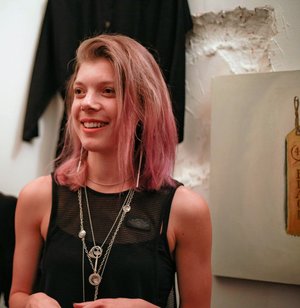
About the author:
Gracie Bialecki is a writer and literary coach who lives in Paris, France. She is the co-founder of the storytelling series Thirst, a poetry editor at Paris Lit Up, and the author of the novel Purple Gold (ANTIBOOKCLUB).
Photo used with permission of the author.
See more about France here in the Dispatches archive.
Gracie Bialecki is a writer and literary coach based in Paris, France. Her work has appeared in various publications, including Catapult and Epiphany Magazine where she was a monthly columnist. Bialecki is co-founder of Thirst, a gallery and storytelling series; a poetry editor at Paris Lit Up; and the author of the novel Purple Gold (ANTIBOOKCLUB).


